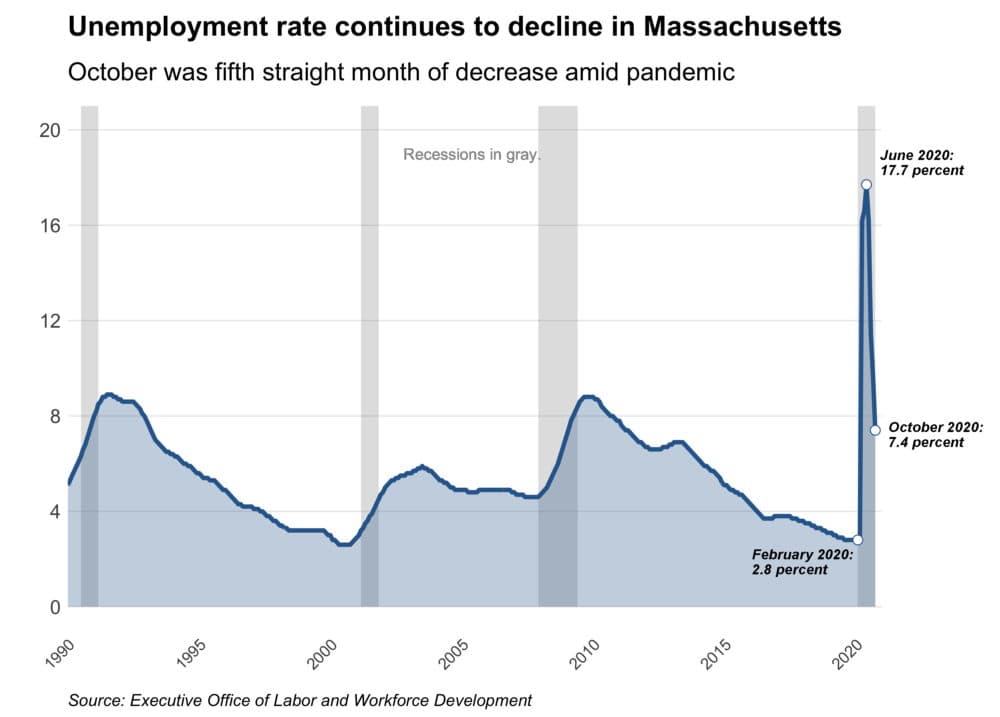Advertisement
Mass. Jobless Rate Falls To 7.4% In October, But Gains Are Slowing

Massachusetts employment data for October offered a mixed outlook on the state's economic recovery: the unemployment rate dropped 2.4 percentage points to the lowest level since the pandemic hit, but job growth continues to slow after unprecedented losses followed by sizable gains.
Labor officials reported Friday that the Massachusetts unemployment rate was 7.4% in October, an improvement from the revised figure of 9.8% in September. The state's jobless rate was only half a percentage point higher than the 6.9 percentage rate for the country.
Employers reported adding 11,400 jobs in October, less than a third of the gains in September and the smallest month-over-month increase since May, according to a survey of employers separate from the household survey used to calculate unemployment rates.
Total employment in Massachusetts remains nearly 360,000 positions below its peak in February, before the virus upended public life and ushered in a national recession.
In March and April, Massachusetts businesses reported cutting about 690,000 positions, about 18% of the pre-COVID workforce.
Starting in May, when the Baker administration kicked off a phased reopening plan, increases in Massachusetts total non-farm payroll surged, surpassing 50,000 for four straight months.
There are also signs that workers in Massachusetts may be giving up on job searches in a strained environment.
Based on a survey of households, officials estimated that the labor force in Massachusetts shed 155,600 workers in September, meaning those individuals effectively stopped seeking employment.
The rate of Massachusetts working-age adults participating in the labor force, either through employment or looking for a job, dropped from 66.5% in September to 63.7% in July.
Economists have cautioned that departing workers could make the state's recovery look better than it actually is, since a lower unemployment rate based on a smaller labor force masks those who are out of work but have given up trying to find it or have left jobs permanently without finding new ones, such as retirements.
Advertisement
The largest monthly job gains came in the trade, transportation and utilities sector, which added 10,300 positions. Other industries that reported gains were professional, scientific and business services, construction, manufacturing, financial activities and other services.
Education and health services cut 4,400 positions in October, more losses than any other sector tracked by the state Executive Office of Labor and Workforce Development, while government lost 4,200 jobs.
Information as well as leisure and hospitality also reported small losses.